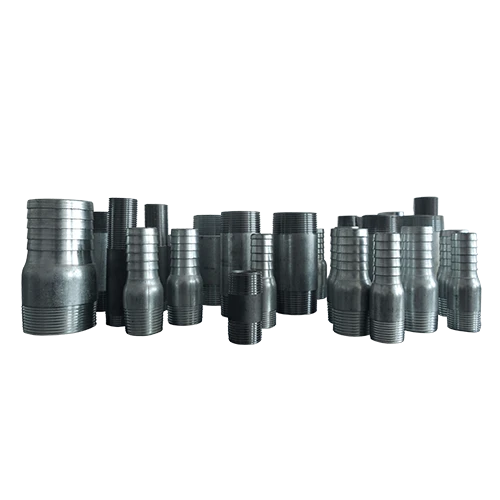Mobile:+86-311-808-126-83
Email:info@ydcastings.com
Water Pipe Closure Cap for Efficient Sealing and Protection
Understanding Water Pipe End Caps A Comprehensive Guide
Water pipe end caps are essential components in various plumbing and piping applications. These small but crucial fittings serve multiple purposes in managing the flow of water, preventing leaks, and maintaining the integrity of piping systems. In this article, we will explore what water pipe end caps are, their types, applications, installation processes, and some maintenance tips to ensure longevity and efficiency.
What Are Water Pipe End Caps?
Water pipe end caps are fittings designed to seal the ends of pipes. They come in various materials, such as PVC, metal, and polyethylene, allowing for versatility based on the specific requirements of a plumbing system. By providing a tight seal, end caps help prevent water from escaping, keeping systems pressurized and functional.
Types of Water Pipe End Caps
1. Material-Based Caps - PVC End Caps Commonly used in residential plumbing and irrigation systems, these caps are lightweight, corrosion-resistant, and easy to install. - Metal End Caps Often made from brass, stainless steel, or galvanized steel, metal caps are favored in industrial and high-pressure systems due to their durability and strength. - Polyethylene End Caps These caps are often used in underground applications as they are resistant to chemicals and corrosion.
2. Threaded vs. Slip Caps - Threaded End Caps These fittings have internal threads, allowing them to screw onto threaded pipe ends. They provide a secure connection and are easy to remove for maintenance. - Slip End Caps These caps fit over the pipe end without threading and are typically used for non-pressure applications. They are ideal for situations where a permanent seal is required.
3. Size Variations End caps come in various sizes to accommodate different pipe diameters, ensuring compatibility with a wide range of plumbing systems. It's important to select the correct size to prevent leaks and maintain system integrity.
Applications of Water Pipe End Caps
Water pipe end caps are used in a multitude of applications, including
- Residential Plumbing They are commonly found in home water supply systems, sealing off unused pipe ends and preventing leaks. - Irrigation Systems In agricultural settings, end caps are essential for capping off distribution lines and maintaining pressure in the system. - Industrial Processes In factories and manufacturing plants, water pipe end caps play a vital role in maintaining pressure and preventing contamination in fluid transfer systems. - Drainage Systems End caps are used in drainage pipes to terminate the line, directing water flow appropriately in sewage and stormwater systems.
water pipe end cap

Installation of Water Pipe End Caps
Installing a water pipe end cap is a straightforward process, as long as you follow a few essential steps
1. Gather Tools and Materials You will need the correct size end cap, PVC cement (if using PVC), or thread sealant (if using threaded fittings), and basic tools like a wrench or a pipe cutter.
2. Prepare the Pipe Ensure that the pipe end is clean and free of debris. If you're using a PVC cap, apply PVC primer to the end of the pipe to improve adhesion.
3. Attach the End Cap - For slip caps, simply push the cap onto the pipe end until it is completely seated. - For threaded caps, apply thread sealant to the threads of the pipe and screw the cap on until snug.
4. Allow for Curing If you used PVC cement, allow adequate time for it to cure before turning on the water supply.
Maintenance Tips for Water Pipe End Caps
- Regular Inspections Check for signs of leakage or wear around the end caps and replace them if necessary. - Temperature Considerations Be aware of temperature fluctuations that can affect material integrity, especially in outdoor settings. - Use Proper Tools Always use appropriate tools when screwing or unscrewing end caps to avoid damaging the fittings.
Conclusion
Water pipe end caps play a vital role in plumbing systems, providing secure seals to prevent leaks and maintain pressure. Understanding the types available and their appropriate applications can significantly enhance your plumbing project’s effectiveness. With proper installation and maintenance, these fittings can ensure your water systems run smoothly and efficiently for years to come.
-
Why Should You Invest in Superior Pump Castings for Your Equipment?NewsJun.09,2025
-
Unlock Performance Potential with Stainless Impellers and Aluminum End CapsNewsJun.09,2025
-
Revolutionize Your Machinery with Superior Cast Iron and Aluminum ComponentsNewsJun.09,2025
-
Revolutionize Fluid Dynamics with Premium Pump ComponentsNewsJun.09,2025
-
Optimizing Industrial Systems with Essential Valve ComponentsNewsJun.09,2025
-
Elevate Grid Efficiency with High-Precision Power CastingsNewsJun.09,2025











